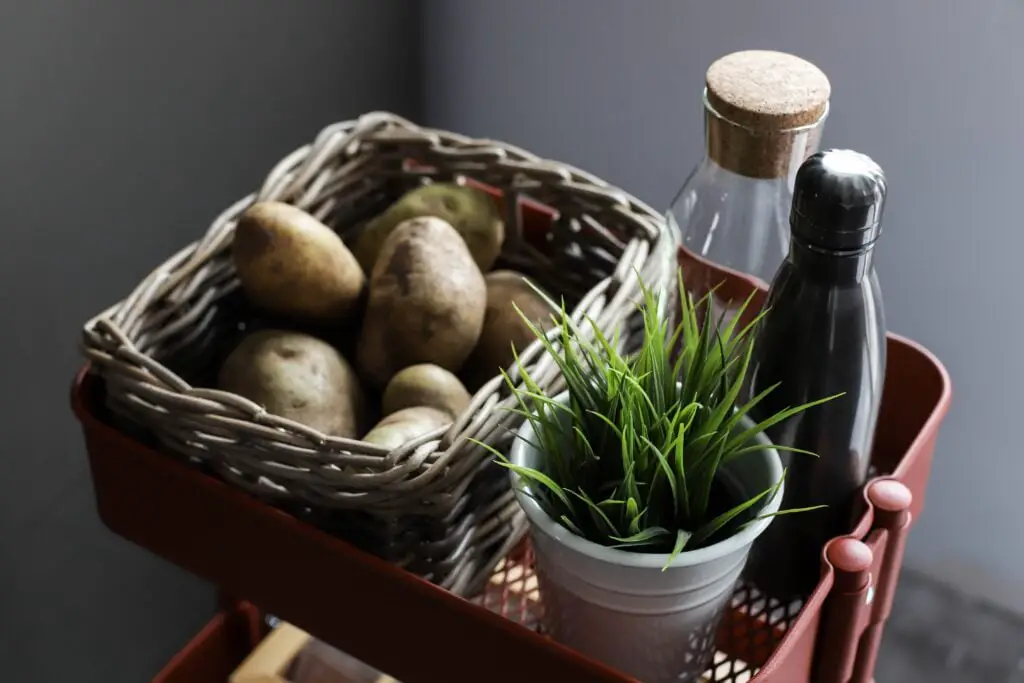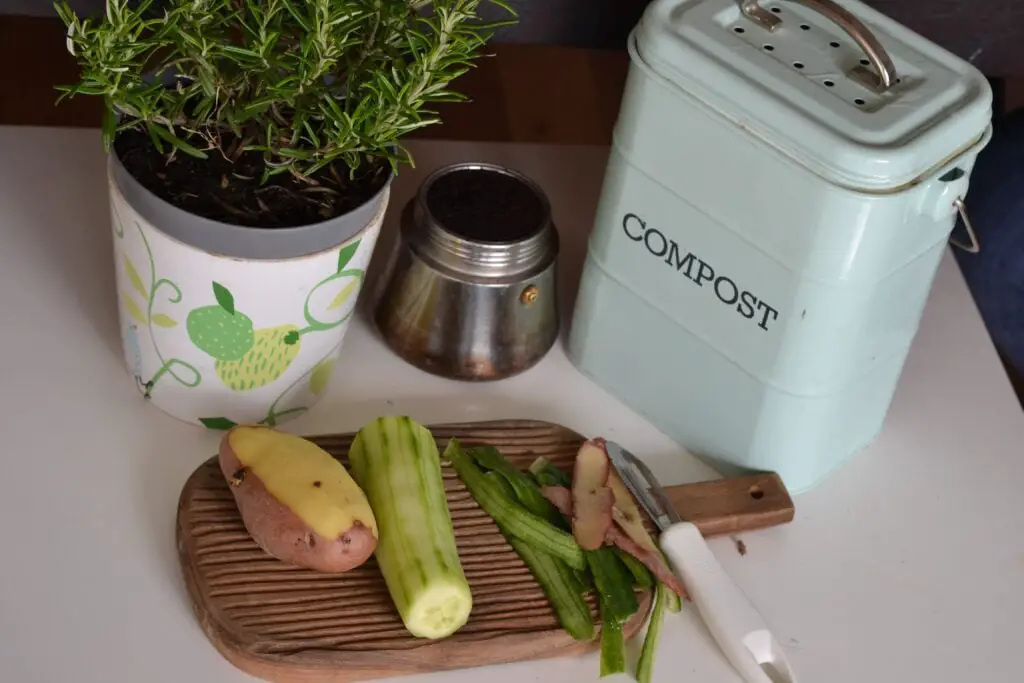Download: How To Use Potato Peels For Plants: Enhance Your Garden Naturally
Table of Contents
Potato peels are often discarded as waste, but did you know that they can be used to nourish your plants and improve your soil? Potato peels are rich in potassium, nitrogen, phosphorus, magnesium, and other minerals that plants need to grow and thrive.
I’ll show you how to use potato peels for plants in different ways, such as making liquid fertilizer, compost, and mulch. And, you’ll gain some tips and precautions to avoid potential problems, such as potato blight and pests.
Related: How To Make Potato Water For Plants
Liquid Plant Fertilizer Made From Potato Peels
One of the easiest ways to use potato peels for plants is to make an organic liquid fertilizer that you can apply to your garden beds or potted plants.
How to make liquid fertilizer from potato peels
- Collect some potato peels and place them in a container. You can use any kind of potato, but organic ones are preferable to avoid pesticides and chemicals.
- Pour water over the potato peels until they are submerged. You can use tap water, rainwater, or distilled water, depending on what you have available.
- Cover the container and let it sit for at least 24 hours. You can also leave it for up to three days, but make sure to stir it once a day to prevent mold and bad smells.
- Strain the liquid and discard the peels. You can use a cheesecloth, a coffee filter, or a fine mesh sieve to separate the liquid from the solids.
- Dilute the liquid with more water before using it on your plants. The ratio depends on how strong you want the fertilizer to be, but a good rule of thumb is to use one part of potato peel liquid to four parts of water.
- Apply the diluted liquid to your plants once every two weeks. You can use a watering can, a spray bottle, or a hose to distribute the fertilizer evenly. Avoid applying it on the leaves, as it may cause burns or fungal infections.

The benefits of using liquid fertilizer from potato peels
- It provides a natural and organic source of nutrients for your plants, especially potassium, which helps them to resist diseases and environmental stress.
- It improves the soil structure and moisture retention, which enhances the root development and water uptake of your plants.
- Besides providing essential nutrients to your plants, they’re particularly effective in deterring pests like Colorado potato beetles, slugs, and wireworms — making them an all-natural pest control solution for your garden.
- It is easy to make and use, and it costs nothing. You can reuse your kitchen scraps and reduce your waste.
Related: 5 Best Potato Storage containers on The Market
Composting Potato Peels for Plants
Another way to use potato peels for plants is to compost them. Composting is a process of decomposing organic matter into a nutrient-rich soil amendment that you can use to enrich your garden. Composting potato peels can provide your plants with nitrogen, phosphorus, potassium, and other micronutrients.
However, composting potato peels also comes with some risks and challenges, such as potato blight and pests.

Tips and Precautions For Composting Potato Peels
Here are some tips and precautions to compost potato peels safely and effectively:
- Do not compost potato peels that show signs of blight, rot, or disease. Potato blight is a fungal infection that affects both potato and tomato plants, and it can spread through the soil and infect your crops. Potato blight can be recognized by yellow patches with brown centers on the leaves and dark patches on the tubers. If you see any of these symptoms, discard the potato peels and do not add them to your compost pile.
- Do not compost potato peels that have sprouted eyes. Potato eyes are the buds that grow on the potato skin, and they can sprout into new plants if they are buried in the soil. This can cause problems for your compost pile, such as uneven decomposition, temperature fluctuations, and unwanted volunteers. To prevent this, cut off the eyes before adding the potato peels to your compost pile, or use them to grow new potatoes in a separate container.
- Balance your compost pile with the right ingredients. A good compost pile needs a mix of green and brown materials, which provide carbon and nitrogen for the decomposing microorganisms. Green materials are fresh and moist, such as fruit and vegetable scraps, grass clippings, and coffee grounds. Brown materials are dry and woody, such as leaves, straw, paper, and cardboard. A general rule is to use three parts of brown materials to one part of green materials. Potato peels are considered green materials, so you need to add enough brown materials to balance them out.
- Turn your compost pile regularly. Turning your compost pile helps to aerate it and distribute the heat and moisture evenly. This speeds up the decomposition process and kills any pathogens or weed seeds that may be present. You can use a pitchfork, a shovel, or a compost tumbler to turn your compost pile every few weeks or whenever you notice it getting too hot, dry, or smelly.
- Use your finished compost on your plants. When your compost pile is ready, it should look like dark, crumbly soil and smell earthy. You can use a compost sifter to separate the finished compost from any undecomposed materials, and return the latter to the pile. You can use your finished compost to improve your soil quality, increase your water retention, and provide your plants with nutrients. You can apply it as a top dressing, a mulch, or a soil amendment, depending on your needs.
- Keep bin secured. Keep in mind that while composting potato peels is beneficial, it’s important to be cautious as they can attract rodents. To avoid this, ensure your compost bin is well managed and secure.
Benefits of composting potato peels
- It recycles your kitchen waste and reduces your environmental impact.
- It creates a valuable soil amendment that can boost your plant growth and health.
- It improves your soil biodiversity and attracts beneficial organisms, such as earthworms and insects.
How to use potato peels as mulch
A third way to use potato peels for plants is to use them as mulch. Mulch is a layer of organic or inorganic material that covers the soil surface and protects it from erosion, evaporation, weeds, and pests.
- Use only fresh and healthy potato peels. Do not use potato peels that are rotten, diseased, or sprouted, as they can cause more harm than good.
- Chop or shred the potato peels into small pieces. This will help them to decompose faster and release their nutrients more easily.
- Spread the potato peels evenly over the soil surface. Do not pile them too thickly, as this can create anaerobic conditions and cause bad smells. A thin layer of about 2 inches is enough to cover the soil and provide the benefits of mulching.
- Mix the potato peels with other organic materials. To make your mulch more effective and diverse, you can combine the potato peels with other organic materials, such as straw, leaves, grass clippings, or wood chips. This will create a more balanced and attractive mulch that can offer more benefits to your plants.
- Replace the potato peels regularly. Since potato peels decompose quickly, you need to replace them every few weeks or whenever you notice them breaking down. You can add the old potato peels to your compost pile or dig them into the soil to enrich it further.
- Use potato peels for indoor plants too. This is especially important during the winter months. This can provide your houseplants with essential nutrients when sunlight is limited.
The Benefits of Using Organic Potato Peel Mulch
- It conserves soil moisture and reduces your watering needs.
- It moderates soil temperature and prevents extreme fluctuations.
- It adds organic matter and nutrients to the soil as it decomposes.
- It suppresses weed growth and competition.
Drawbacks of Using Potato Peels for Mulch
- It can attract rodents and other animals that may dig up your plants or eat your crops.
- It can harbor diseases and pests that may infect your plants or spread to other areas.
- It can decompose too quickly and lose its effectiveness.
Additional Benefits of Potato Peels for Plants and Soil
Potato peels aren’t just a source of nutrients; they also play a crucial role in improving soil fertility. They can optimize seed germination and accelerate the growth period of adult plants. By incorporating potato peels into your soil, you’re not only recycling waste but also enhancing the overall health and productivity of your garden.
Conclusion: How To Use Potato Peels For Plants
Potato peels are not just waste, but a valuable resource that you can use to nourish your plants and improve your soil. You can use potato peels for plants in different ways, such as making liquid fertilizer, compost, or mulch.
However, you need to be careful and follow some precautions to avoid potential problems, such as potato blight and pests. By using potato peels for plants, you can save money, reduce waste, and grow healthier and happier plants.
Also Read: 3 Best Potatoe Grow Bags

